Filtered By: Lifestyle
Lifestyle
Dining on memory, Part I
By SYLVIA L. MAYUGA
Part 1 of 2
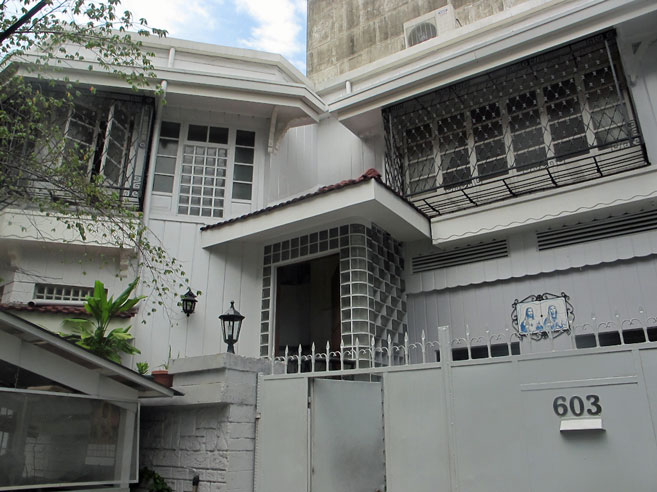 “We’re home, kids. We’re lunching on history today,” I told my son Aya and his 16-year-old daughter Ava one quiet Malate Sunday as cook/headwaiter Noah ushered us to a table covered by a snowy white woven Abra cloth.
“We’re home, kids. We’re lunching on history today,” I told my son Aya and his 16-year-old daughter Ava one quiet Malate Sunday as cook/headwaiter Noah ushered us to a table covered by a snowy white woven Abra cloth.
Purple Yam (PY) of the growing reputation has no signage, but I knew this two-storey family home with its decorative wall of glass blocks on 603 Julio Nakpil. Five minutes away was my own tiny writer’s pad in the ‘70s, just before Malate suffered a full-scale invasion of high-rise condos, girlie bars, massage parlors and honky-tonks in row upon row of garish neons of barely disguised intentions.
I’d also visited for an interview with the lady of the house, Dr. Solita Camara-Besa. This street was home to me for a whole decade. What better place to celebrate my only child’s 42nd birthday with a special treat?
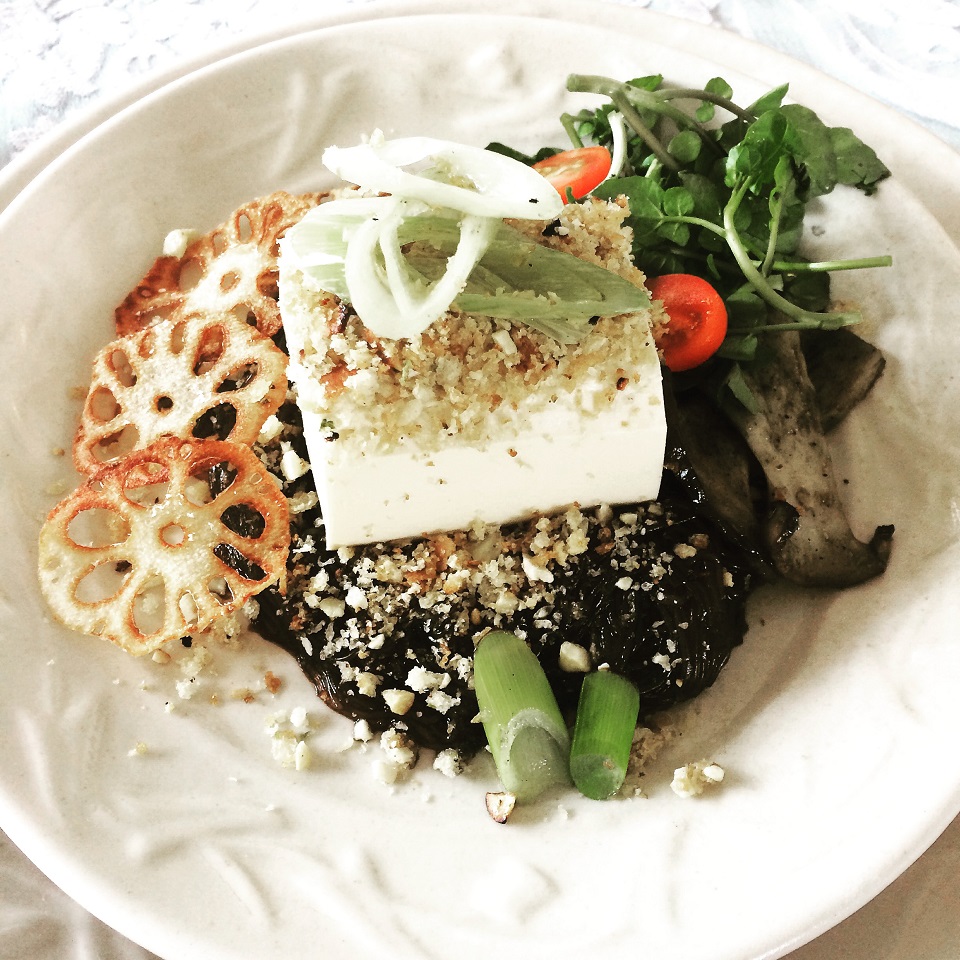 PY’s reputation for a new variety of Filipino fusion cuisine in a city mushrooming with restos preceded it for months. What word of mouth failed to mention was the unexpected twist of Dr. Solita’s daughter Amy, resident head chef with a four-man kitchen team, as lunchtime raconteur. The moment she sat down, she turned a meal exquisite in every detail into a magical mystery tour enthralling us with history as course upon course bombarded our palates with yet another new delight. “Lasang babel gam,” quipped my humorist son.
PY’s reputation for a new variety of Filipino fusion cuisine in a city mushrooming with restos preceded it for months. What word of mouth failed to mention was the unexpected twist of Dr. Solita’s daughter Amy, resident head chef with a four-man kitchen team, as lunchtime raconteur. The moment she sat down, she turned a meal exquisite in every detail into a magical mystery tour enthralling us with history as course upon course bombarded our palates with yet another new delight. “Lasang babel gam,” quipped my humorist son.
An underpaid Pinay writer saves for a six-course PY meal at P1500 per head. But far more than food for the belly is its nourishment of mind, tickling a flood of memories in a lifetime of comfort foods north to south of our archipelago. The ingenuity of our forebears dining well in tropical abundance comes to fore in both heirloom recipes and creative adaptations to foreign culinary influences. Top that with PY’s “re-imagined” cuisine using only the freshest ingredients sourced from near and far and you get an unforgettable feast of memory.
Amy introduced each course with a tale of origin and related recovery of recipes preserved by tradition in creative Filipino relationship with food. What we didn’t quite realize was how she was also nourishing us with her own peak adventures in identity, ferreted from ancestral memory all over the Philippines.
It took a second visit with a bosom buddy to touch the source of Purple Yam’s world of meaning as Amy opened the new edition of her prizewinning book, “Memories of Philippine Kitchens”. Now the clasp between separate ends of her life clicked shut—her first 21 years in the Philippines and her next two decades in America when she began shuttling back and forth NYC and nearly all Philippine regions, tasting it all.
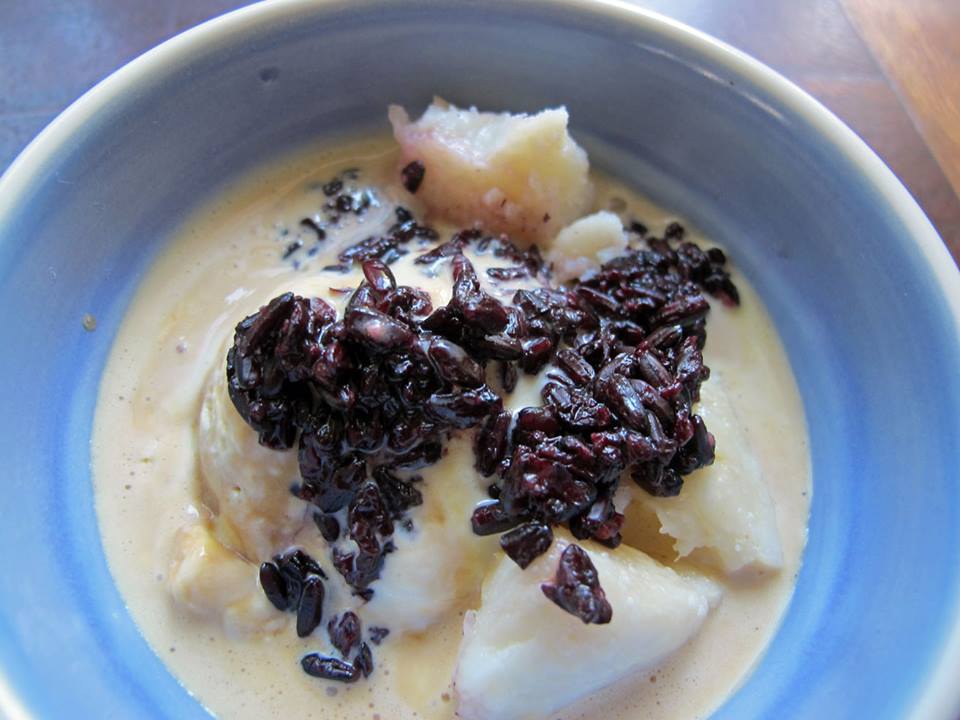 It’s been 33 years since she first left a mother country she deeply loves, a new U.P. graduate in leftist ferment. Realizing that a suspended writ of habeas corpus in imminent martial law could throw her in jail indefinitely, she secured an exchange student grant to Germany, with only a brief backward look.
It’s been 33 years since she first left a mother country she deeply loves, a new U.P. graduate in leftist ferment. Realizing that a suspended writ of habeas corpus in imminent martial law could throw her in jail indefinitely, she secured an exchange student grant to Germany, with only a brief backward look.
After martial law was declared, her mom told Amy not to come back. Rumor had it that as a member of the UP student council led by the well-known Left activist Gerry Barrican, she was in an arrest list. With writing as her strong suit, she then applied for a mass communications course at Temple University in Philadelphia.
Still oblivious to her own grandmother’s high culinary accomplishments in her mother’s hometown of Iba, Zambales, Amy cooked for herself well enough in America, picking up from friends as she went along. But available ingredients like “gigantic eggplants without flavor” bothered her, as did salads doused with “a whole lot of oils” for her palate accustomed to only vinegar, sugar and ground black pepper for salad dressing.
Fate wasn’t through delivering shocks to Amy Besa’s palate. Next came Romy Dorotan from Irosin, Sorsogon enrolled for a PhD in economics. Watching her toast her fave garlic bits, he wryly commented that she was burning them. He turned out to be “annoying, always complaining about the food every time we ate out,” she says.
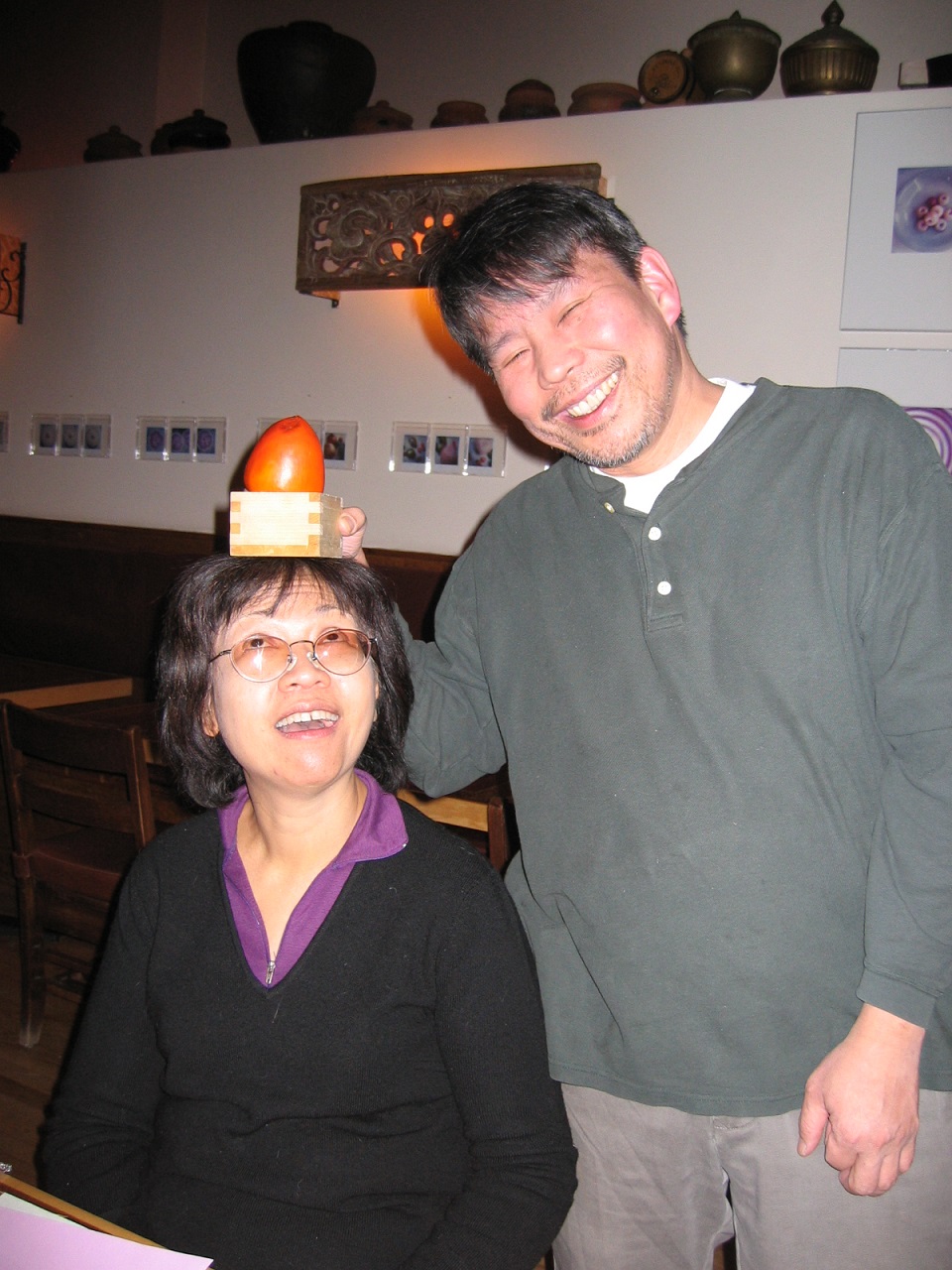 What she thought perfectly fine, he pronounced as stale bread, rancid oil, fish old and frozen too long. He also recognized soup heated in the microwave, unerringly spotting chemicals and artificial flavoring. She has no idea where this guy, soon to be her husband, got his sensitive palate, surmising that it could have been his provincial childhood with fresh food. But she muses next that she, too, grew up with fresh food in Manila, conceding that Romy’s extra keen palate “must be innate.”
What she thought perfectly fine, he pronounced as stale bread, rancid oil, fish old and frozen too long. He also recognized soup heated in the microwave, unerringly spotting chemicals and artificial flavoring. She has no idea where this guy, soon to be her husband, got his sensitive palate, surmising that it could have been his provincial childhood with fresh food. But she muses next that she, too, grew up with fresh food in Manila, conceding that Romy’s extra keen palate “must be innate.”
And so their life together turned out to be continuous creative adventure with food. A high point came when they got into green markets where they first heard about Alice Waters—a radical in Berkeley, California advocating “bringing back real food by growing veggies in back gardens and patronizing farms and ranchers growing pigs and cattle through natural means unlike factory meat.”
Finally trying Café Fanny in Berkeley, they found each ingredient of its simple meals—like basic pork chops with potatoes and veggies—specially sourced in the highest standards of the natural. It turned their heads around on what a truly good meal is.
After Romy’s stint at Hubert’s—the leading light of a new breed of New York restaurant guided by Alice Waters’ philosophy, doing everything from scratch using organic baby vegetables—he and Amy were ready for their own New York restaurant.
In August of 1995, in SoHo, they opened Cendrillon—French for Cinderella, a ballet by the Lyons Opera Ballet whose posters enchanted Romy to endless doodles. “We didn’t want to name it for ourselves [nor] give it a regional name because we’re not serving traditional Philippine food," he told the New York Times food critic who came to review Cendrillon a year after its opening. The critic, Ruth Raichl, gave them a one-star review, noting how "much of the food is extraordinary—looking backward and half a world away while leaping forward."
Amy herself calls Cendrillon “the ultimate mom and pop restaurant built with our own money, helped along by friends and family and no corporate interests whatsoever.” Risk-taking was high adventure —pursuing creative insights on Philippine culinary history with ceaseless library and field research alternating with actual cooking.
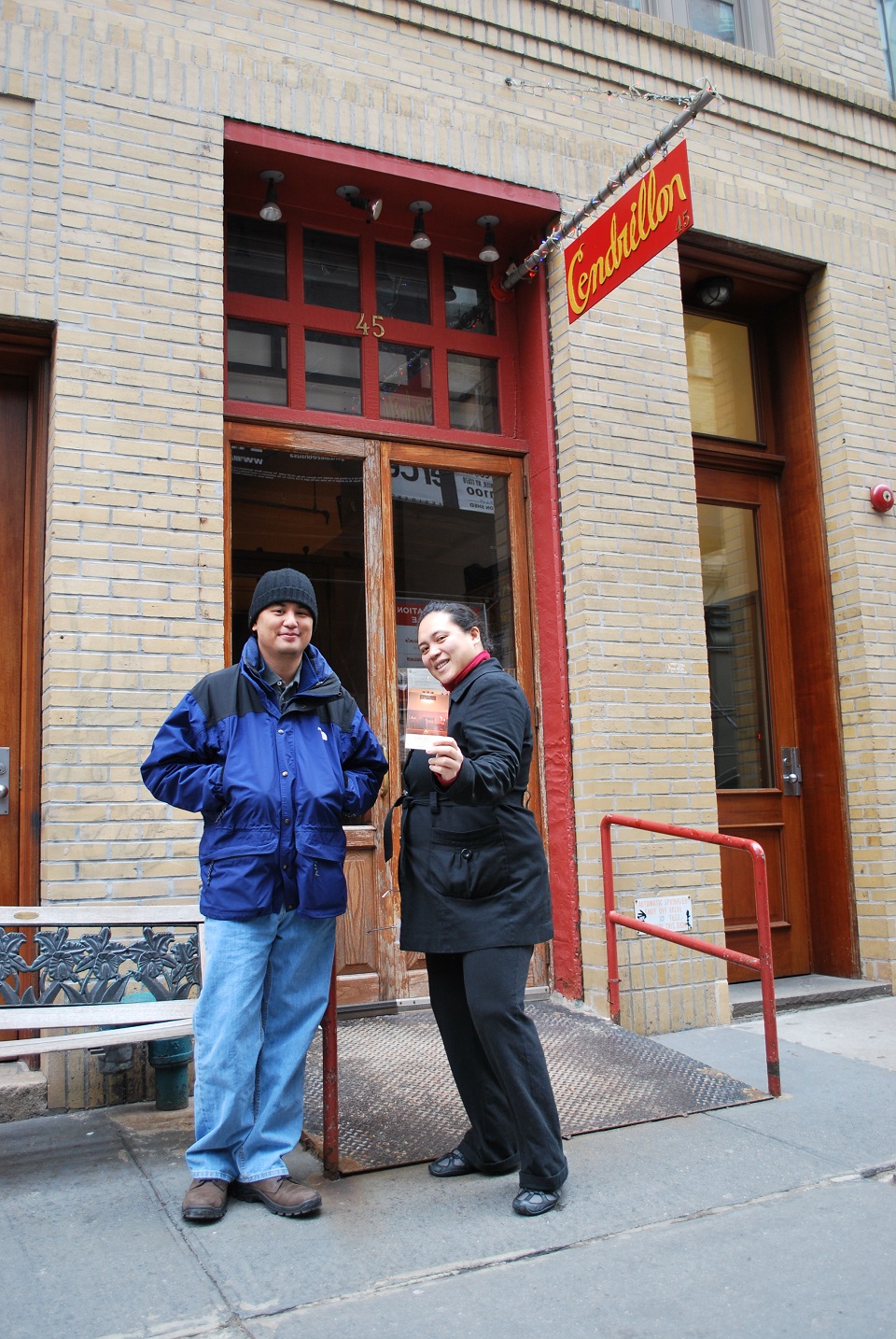 They were coming to see the Philippines in a new light as their partnership turned to researching the book, “Memories of Philippine Kitchens”. In Amy’s words, its mantra is, “The Philippines is an archipelago. We have one of the longest coastlines in the world—both sea and fresh water.” Insight upon insight led to the outlines of Philippine culinary history as a true child of its natural environment.
They were coming to see the Philippines in a new light as their partnership turned to researching the book, “Memories of Philippine Kitchens”. In Amy’s words, its mantra is, “The Philippines is an archipelago. We have one of the longest coastlines in the world—both sea and fresh water.” Insight upon insight led to the outlines of Philippine culinary history as a true child of its natural environment.
Kinilaw, for instance, “is the cuisine of freshness. We have archeological proof that early Filipinos ate raw fish with tabon tabon,” Amy quotes her food historian exemplar Doreen Fernandez. She adds, “It’s a shame that we’re constantly ignored when lists are made. Our fish sinigang can rank among the world's best—made with natural souring ingredients like guava, tamarind, kamias, batuan, libas, young cashew leaves and spiked with either siling haba or labuyo, tempered with labanos and native greens.”
There was no lack of clientele happy with Cendrillon’s fusion or sympathetic food critics like the New York Times’s Frank Bruni, who gave Cendrillon a two-star review in its 10th year. But after 13 years came time for Romy’s original academic course, economics, to catch up with Cendrillon’s pure creativity surviving New York’s shark-infested waters.
“Manhattan and the rest of the city are now controlled by developers that want to jack up real estate values. The era when the US—especially NYC—was a place for immigrants to build up a livelihood is gone. Thank God we were still able to find affordable rent in Ditmas Park, Brooklyn close to our home in Flatbush, but it will not stay that long so I’m glad I’m of retirement age,” Amy candidly says of their decision to close Cendrillon and open another restaurant in more hospitably-priced Brooklyn. This time it’s named with inventive Romy’s favorite ingredient, the ube tuber a.k.a. Purple Yam.
From there was a short step to opening Purple Yam Malate in Amy’s own ancestral home, a new adventure bringing global experience back to home ground, perchance in new blossoming. And so, just as she recognized the time to leave the Philippines, so did she recognize the “time to go back to the homeland where we can establish our legacy of good food. We are imparting it now to our kitchen staff and to our diners who recognize what we’re doing.” — BM, GMA News
To be continued

Amy Besa's Malate restaurant Purple Yam has no sign outside advertising itself, but it already has a reputation for its new variety of Filipino fusion cuisine.
Purple Yam (PY) of the growing reputation has no signage, but I knew this two-storey family home with its decorative wall of glass blocks on 603 Julio Nakpil. Five minutes away was my own tiny writer’s pad in the ‘70s, just before Malate suffered a full-scale invasion of high-rise condos, girlie bars, massage parlors and honky-tonks in row upon row of garish neons of barely disguised intentions.
I’d also visited for an interview with the lady of the house, Dr. Solita Camara-Besa. This street was home to me for a whole decade. What better place to celebrate my only child’s 42nd birthday with a special treat?

Combined salad and appetizer: tofu on sampaloc sotanghon
An underpaid Pinay writer saves for a six-course PY meal at P1500 per head. But far more than food for the belly is its nourishment of mind, tickling a flood of memories in a lifetime of comfort foods north to south of our archipelago. The ingenuity of our forebears dining well in tropical abundance comes to fore in both heirloom recipes and creative adaptations to foreign culinary influences. Top that with PY’s “re-imagined” cuisine using only the freshest ingredients sourced from near and far and you get an unforgettable feast of memory.
Amy introduced each course with a tale of origin and related recovery of recipes preserved by tradition in creative Filipino relationship with food. What we didn’t quite realize was how she was also nourishing us with her own peak adventures in identity, ferreted from ancestral memory all over the Philippines.
It took a second visit with a bosom buddy to touch the source of Purple Yam’s world of meaning as Amy opened the new edition of her prizewinning book, “Memories of Philippine Kitchens”. Now the clasp between separate ends of her life clicked shut—her first 21 years in the Philippines and her next two decades in America when she began shuttling back and forth NYC and nearly all Philippine regions, tasting it all.

Binuburan for dessert: cassava and heirloom rice called balatinao, a delicacy from Pangasinan and the Cordilleras, with fermented cassava atop buri pandan ice cream.
After martial law was declared, her mom told Amy not to come back. Rumor had it that as a member of the UP student council led by the well-known Left activist Gerry Barrican, she was in an arrest list. With writing as her strong suit, she then applied for a mass communications course at Temple University in Philadelphia.
Still oblivious to her own grandmother’s high culinary accomplishments in her mother’s hometown of Iba, Zambales, Amy cooked for herself well enough in America, picking up from friends as she went along. But available ingredients like “gigantic eggplants without flavor” bothered her, as did salads doused with “a whole lot of oils” for her palate accustomed to only vinegar, sugar and ground black pepper for salad dressing.
Fate wasn’t through delivering shocks to Amy Besa’s palate. Next came Romy Dorotan from Irosin, Sorsogon enrolled for a PhD in economics. Watching her toast her fave garlic bits, he wryly commented that she was burning them. He turned out to be “annoying, always complaining about the food every time we ate out,” she says.

Romy Dorotan crowns Amy Besa with a persimmon in an empty sake box
And so their life together turned out to be continuous creative adventure with food. A high point came when they got into green markets where they first heard about Alice Waters—a radical in Berkeley, California advocating “bringing back real food by growing veggies in back gardens and patronizing farms and ranchers growing pigs and cattle through natural means unlike factory meat.”
Finally trying Café Fanny in Berkeley, they found each ingredient of its simple meals—like basic pork chops with potatoes and veggies—specially sourced in the highest standards of the natural. It turned their heads around on what a truly good meal is.
After Romy’s stint at Hubert’s—the leading light of a new breed of New York restaurant guided by Alice Waters’ philosophy, doing everything from scratch using organic baby vegetables—he and Amy were ready for their own New York restaurant.
In August of 1995, in SoHo, they opened Cendrillon—French for Cinderella, a ballet by the Lyons Opera Ballet whose posters enchanted Romy to endless doodles. “We didn’t want to name it for ourselves [nor] give it a regional name because we’re not serving traditional Philippine food," he told the New York Times food critic who came to review Cendrillon a year after its opening. The critic, Ruth Raichl, gave them a one-star review, noting how "much of the food is extraordinary—looking backward and half a world away while leaping forward."
Amy herself calls Cendrillon “the ultimate mom and pop restaurant built with our own money, helped along by friends and family and no corporate interests whatsoever.” Risk-taking was high adventure —pursuing creative insights on Philippine culinary history with ceaseless library and field research alternating with actual cooking.

The facade of Amy Besa and Romy Dorotan's restaurant in New York City, Cendrillon.
Kinilaw, for instance, “is the cuisine of freshness. We have archeological proof that early Filipinos ate raw fish with tabon tabon,” Amy quotes her food historian exemplar Doreen Fernandez. She adds, “It’s a shame that we’re constantly ignored when lists are made. Our fish sinigang can rank among the world's best—made with natural souring ingredients like guava, tamarind, kamias, batuan, libas, young cashew leaves and spiked with either siling haba or labuyo, tempered with labanos and native greens.”
There was no lack of clientele happy with Cendrillon’s fusion or sympathetic food critics like the New York Times’s Frank Bruni, who gave Cendrillon a two-star review in its 10th year. But after 13 years came time for Romy’s original academic course, economics, to catch up with Cendrillon’s pure creativity surviving New York’s shark-infested waters.
“Manhattan and the rest of the city are now controlled by developers that want to jack up real estate values. The era when the US—especially NYC—was a place for immigrants to build up a livelihood is gone. Thank God we were still able to find affordable rent in Ditmas Park, Brooklyn close to our home in Flatbush, but it will not stay that long so I’m glad I’m of retirement age,” Amy candidly says of their decision to close Cendrillon and open another restaurant in more hospitably-priced Brooklyn. This time it’s named with inventive Romy’s favorite ingredient, the ube tuber a.k.a. Purple Yam.
From there was a short step to opening Purple Yam Malate in Amy’s own ancestral home, a new adventure bringing global experience back to home ground, perchance in new blossoming. And so, just as she recognized the time to leave the Philippines, so did she recognize the “time to go back to the homeland where we can establish our legacy of good food. We are imparting it now to our kitchen staff and to our diners who recognize what we’re doing.” — BM, GMA News
To be continued
More Videos
Most Popular




